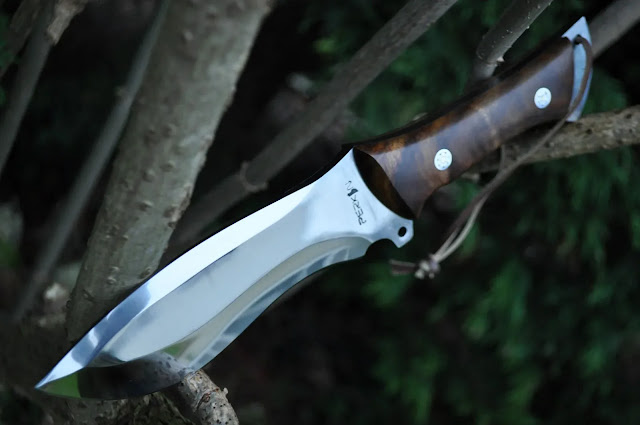Machete Knife vs. Kukri Knife: Which Is the Best for Your Next Outdoor Adventure?
If you plan to go jungle-hopping and camping soon, you must be well-equipped for the wilderness. And when it comes to cutting through thick foliage, two of the most popular options are the machete knife and the kukri knife.
While both blades are designed for similar purposes, some key differences make each unique. This article will examine the machete and kukri knives to help you choose the right tool for your upcoming trip.
Machete Knife Pros and Cons
Let's start with the machete knife. Unlike the enormous traditional machete, the machete knife is a smaller, more compact version designed for more precise cutting tasks. This means the blade is typically shorter and thinner than a traditional machete, and the handle is smaller and easier to grip. This makes the machete knife an excellent choice for those needing a reliable tool for clearing a path, cutting through vines and branches, and other tasks requiring quickness and precision.
This knife's compact size and lightweight design make it easy to carry and use for extended periods, while the sharp blade can handle various cutting tasks. Plus, the machete knife is designed with a straight edge, which makes it easier to control and provides more leverage for chopping through thicker branches and woody stems. All these things contribute to the knife’s versatility, which is second to none for its caliber.
However, among the many downsides to this knife include its blade. For starters, the straight blade can make it more challenging to control when working in tight spaces or around obstacles. Additionally, the smaller size may not be suitable for heavier tasks like chopping wood or self-defense, where the more traditional machete would be far better. Nevertheless, it’s still better than nothing, especially in the wild.
Kukri Knife Pros and Cons
Now, let's move on to the kukri knife. This Nepalese blade is known for its unique design, which features a curved blade that's thicker near the handle and tapers towards the tip. The shape of the kukri knife makes it an ideal tool for chopping and slicing through dense vegetation, as well as for more heavy-duty tasks like chopping wood and even self-defense.
One of the most significant advantages of the kukri knife is its curved blade, which allows for more precise cuts and easier control. The thickness of the blade also makes it an ideal choice for heavier tasks, as it can handle tougher jobs without the risk of the edge breaking or becoming damaged.
As for the downsides, they’re also essential to take note of. For instance, the kukri’s unique design may take some getting used to, especially if you're accustomed to using a straight blade. Additionally, the weight and heft of the kukri can make it more challenging to wield for extended periods, especially if you're not used to using a heavier blade.
Which Should You Pick?
Ultimately, it will depend on your specific needs and wants. The machete knife may be your best choice if you need a versatile tool for precise cutting tasks. However, the kukri knife may be better if you need a heavy-duty blade to handle more challenging jobs. It's also worth considering the specific features of each blade, such as the length and weight, as well as any additional features like a serrated edge or a comfortable grip.
In conclusion, whether you choose a machete knife or a kukri knife, it's important to remember that both blades are designed to help you tackle tough jobs and navigate challenging terrain. With the correct knife in your hand, you'll be better equipped to handle anything that comes your way out in the wild. So make sure to choose wisely and enjoy your adventure!


.png)

Comments
Post a Comment